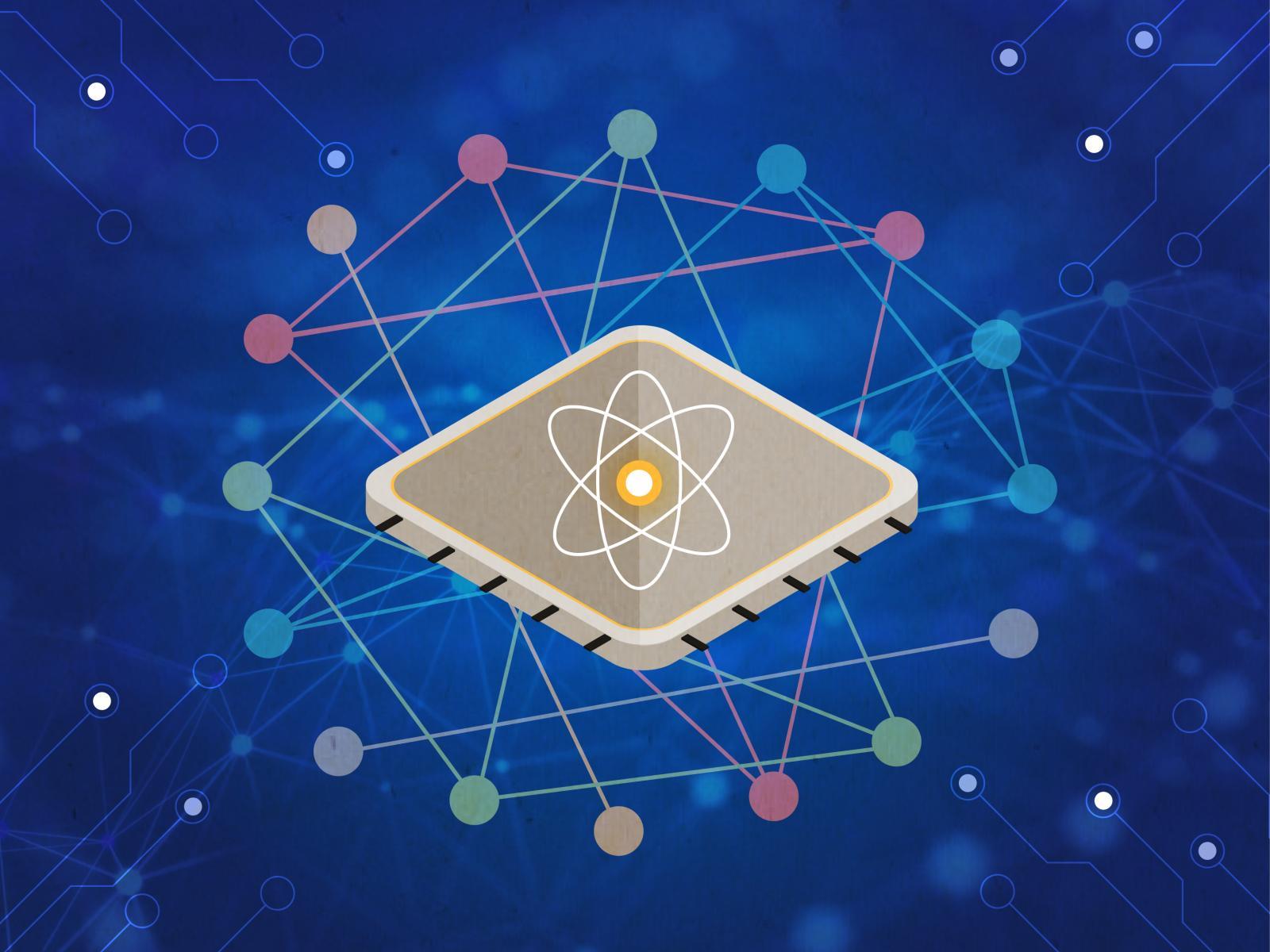Enabling Nuclear Physics Discoveries with Quantum Computing
A new approach validates quantum algorithms for nuclear physics applications

Quantum simulations may be able to solve nuclear physics problems that are inaccessible by current methods.
(Image by Stephanie King | Pacific Northwest National Laboratory)
With the advent of exascale computing, scientists can perform complex calculations to address difficult challenges in research for energy and national security. However, some problems are still inaccessible for even these powerful computers. For certain types of problems, quantum computers—representing a fundamentally different type of computing—may be able to excel over the world’s fastest exascale supercomputers.
Though quantum computers currently exist, they are generally considered to be too "noisy" to produce accurate calculations. More research and development is needed to increase the error correction and stability of quantum computing devices to produce accurate results. While some scientists are developing the quantum device hardware and circuit designs for these future quantum computers, others like Ang Li, a computer scientist at Pacific Northwest National Laboratory (PNNL), are preparing and verifying the quantum algorithms that will run on this hardware.
In a new study published in The European Physics Journal A, Li and colleagues from Oak Ridge National Laboratory (ORNL) and Los Alamos National Laboratory created a method to validate quantum algorithms for nuclear physics applications. While Li and his colleagues are not the first to apply quantum computing methods to low-energy physics calculations, their newly developed method makes validating these calculations more efficient—setting the stage for quantum advances over classical calculations in this field.
“Even though we don’t have quantum computers capable of performing certain calculations, we can simulate how they may be able to perform on future quantum platforms through their classical simulation on exascale supercomputers,” said Li. “That way, when the technology does become available, we have algorithms ready to test on the new hardware.”
Li developed the software called Northwest Quantum Simulator (NWQ-Sim) to simulate quantum devices and circuits. Unlike the circuits of classical computers, quantum circuits are not restricted to the use of binary “1” or “0” states. Instead, they use qubits that can exist in both states simultaneously—and every state in between.
In low-energy nuclear physics, scientists perform calculations to understand the structure and stability of atomic nuclei. The particles within the nuclei interact with one another and influence each other’s physical properties. As more particles are taken into consideration, the calculations become more complex. This “curse of dimensionality” is where quantum computing can provide an advantage.
Compared to classical computing, quantum computing is not as affected by the scale of calculations. With each additional quantum bit, or qubit, added to the computer, the quantum system becomes exponentially more powerful. Therefore, larger simulations on quantum computers only require a modest increase in resources—in this case, qubits.
Li’s NWQ-Sim software was modified to validate a quantum projection algorithm that was developed by his co-authors in a previous work. This algorithm progressively amplifies the probability of converging to ground states—the lowest energy state of a system—which provides crucial information about the properties of a system. NWQ-Sim confirms that this projection algorithm could produce sufficiently accurate results for solving challenging low-energy nuclear physics problems, as well as other problems in physics and chemistry, on future quantum computers.
“In concept, quantum calculations have the potential to be more efficient than classical ones for low-energy nuclear physics,” said Li. “Current methods for emulating quantum circuits have too large memory and processing requirements to validate these calculations on classical computers. Our method provides a more efficient way to simulate and verify the proposed quantum projection algorithms, which typically generate extremely deep circuits, for use on a quantum computer.”
To create a more efficient process, Li and his colleagues first mapped the interactions of an atomic nucleus to the qubit space. They then developed projection algorithms for desired low-energy nuclear state preparation and validated the algorithm circuits through numerical simulation on graphics processing units of various high-performance computing systems. They found that their method was highly accurate for verifying simulations involving smaller nuclei, such as helium, oxygen, and calcium.
“Next, we plan to extend this work to larger nuclei, such as iron and nickel,” said Li.
This research was primarily supported by the Quantum Science Center, a Department of Energy, Office of Science, National Quantum Information Science Research Center headquartered at ORNL. This research used resources of the Oak Ridge Leadership Computing Facility and the National Energy Research Scientific Computing Center, both of which are Department of Energy Office of Science user facilities.
Published: June 24, 2024